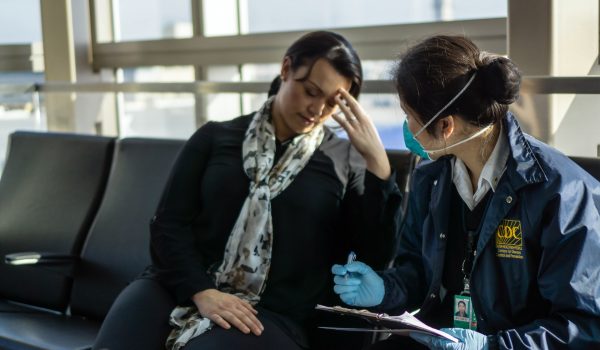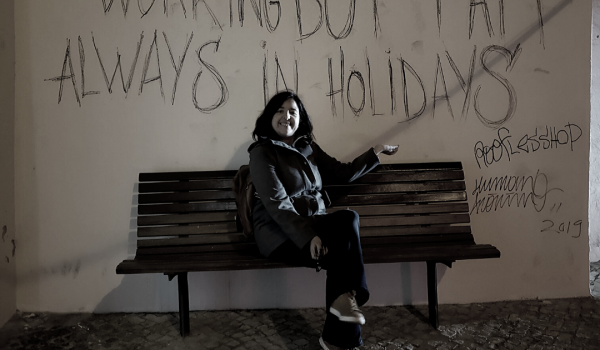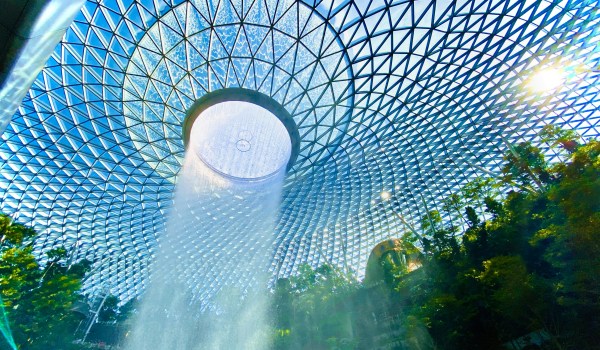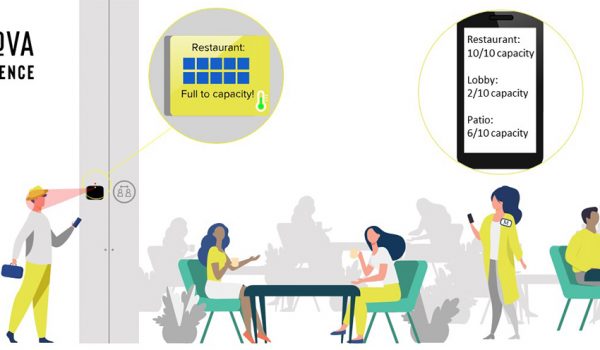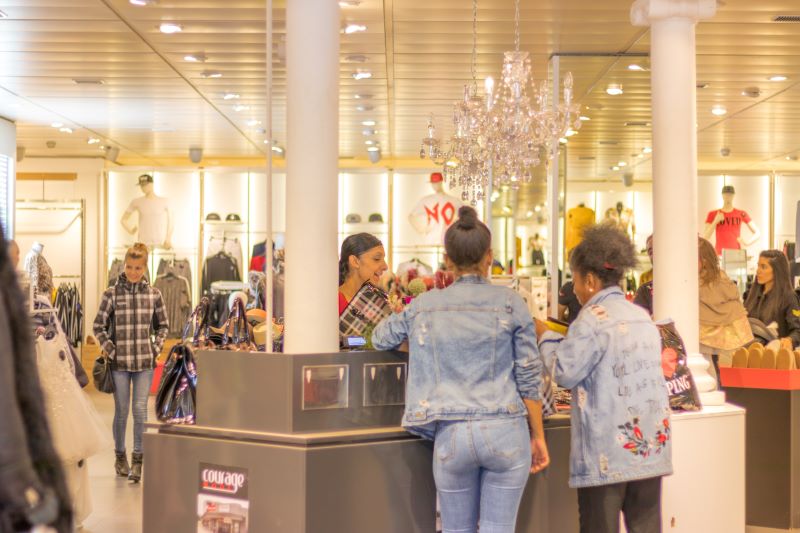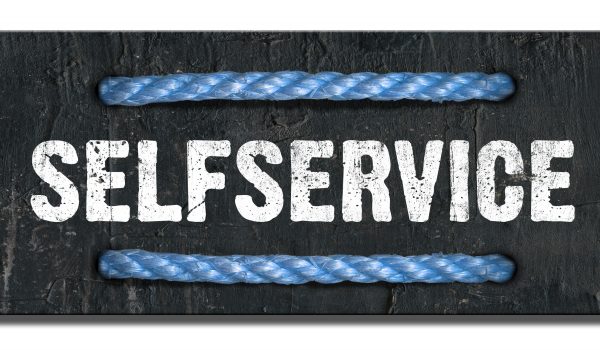
The Wholehearted Traveler and Other 2024 Travel Trends
Back in 2020, we predicted the rise of the Revenge Traveler and the impact it would have on travel and hospitality experience providers. As we approach 2024, we are spotting a new type of traveler on the horizon. And a set of trends that will challenge some of the ways you think about designing and delivering customer experiences.
Post-pandemic, people have a new level of awareness and a more immediate sense of what they need and want. That includes a desire to have real, immersive shared experiences. Enter the Wholehearted Traveler. This new traveler sparks a variety of the travel trends coming our way in the new year. Before we dive into those, let’s get to know our new traveler’s motivations, expectations, and needs. And what that means for the travel industry and experience designers.
The Wholehearted Traveler
Travelers in 2024 are seeking purpose, meaning, impact, and connection through travel. As a result, they are more open to experiential travel rather than the more passive travel of the past.
Post-pandemic, we truly are traveling wholeheartedly. We choose destinations, travel companions, and activities with purpose. We are demanding meaning, impact and connection from every aspect of our trips. These underlying motivations for travel reveal the wholehearted traveler’s trip means more to them now. Travel is higher stakes when the criteria for a trip goes beyond simply “getting away.”
This carries a host of opportunities for providers and experience designers across the travel industry. But it also comes with an important word of caution. Because the travel experience is connected to purpose, the wholehearted traveler will be less forgiving when the experience basics are not covered. This is higher stakes travel for our guests. It is also a higher stakes game for those of us designing and delivering experiences for them.
At the recent Wall Street Journal The Future of Everything: The Future of Travel Festival, the head of Turkish airlines, Fatih Durmaz, captured the current spirit of travelers well. He said today’s traveler wants “to go farther, faster, more comfortably.” This speaks to the wholehearted traveler across generations. In our current moment, the sense is, if I am going to travel, I am going to have the trip of a lifetime. That translates to more opportunity – and more responsibility – for human-centered, impactful experiences at every touchpoint of the journey.
Delivering on those expectations starts with understanding who we are encountering at each journey stage. And how their expectations are evolving in the coming year. That brings us to the next set of travel trends for 2024.
Family Travel – Experience New Places Together
Families are traveling together more. This is another post-pandemic shift. Families who had been separated are seeking opportunities to connect and discover new places together. Additionally, families do not live as close to each other as they did years ago. Travel enables families to come together to enjoy shared experiences and establish new traditions.
Rather than one family member staying in place and others traveling to meet them, families are starting to meet in major cities/transportation hubs like Istanbul, New York City, and London.
On the delivery side, this means we need to prepare for groups traveling across the journey (airlines, we all know that group reservations are still on spreadsheets… time for a change?). But group travel is not only a logistical concern and enhancement opportunity for airlines. Think about the impact of a rise in group travel on airports, car reservations, hotel accommodations, and activities reservations. And consider the composition of those groups and the varying needs across personas within families.
Multigenerational Travel is on the Rise
Leisure Group Travel Magazine reports “more than 20.8 million travelers in the United States alone traveled on a multigenerational trip of three or more generations.” With an aging US population, that number is only expected to grow. And that is just in the United States. We are seeing the multigenerational family trend across global travel.
Multigenerational travel represents an influx in travel spending. But it also creates additional levels of complexity in designing and delivering personalized, hospitality-driven experiences across journey touchpoints. It is time to think carefully about how to design for your guests. In the multigenerational context, you can no longer separate out personas and design discreet experiences for each persona segmentation. In this context, you are tasked with designing for a persona that includes the elderly traveler and the Millennial traveler at the same time, in the same space.
We foresee an uptick in the use of travel agents to help plan these multi-needs/multi-interest vacations. Be ready to respond with value. To the travel agents and the destination package designers, take this warning. Before trip planners outsource you to ChatGPT, start curating something special. Build itineraries with emotional charge. This is something ChatGPT cannot do. And your market needs and wants it.
Lounge Experience
If you have noticed more airport lounge announcements and lounge experiences recently, you are spotting a top travel trend for 2024 and beyond. According to Globe Newswire, citing Research and Markets data, the “global airport lounge access market is expected to generate USD 55.71 Billion by the end of 2028.” This marks an increase from 6.42B in 2022. This trend one to watch for the travel and hospitality industry and ancillary lifestyle industries.
Credit card companies are creating airport lounges and curating airport lounge experiences as differentiators for their customers. Credit cards, as lifestyle brands, need to show up where customers live, travel to, and travel through. For this reason, credit card companies are making more of a commitment to their customers. In turn, they are aiming for customers to make more of a commitment to them through increased utilization and greater loyalty.
To compete for customer acquisition and give more value, credit card companies are offering experiences their customers care about. With the rise of the wholehearted traveler, they recognize airport lounges are among the high value experiences today’s customers crave.
In fact, airport lounges are a locus for the trends of the 2024 traveler. With the right hospitality experience design, hospitality standards, and a well-trained staff, lounges are poised to meet the unique and evolving needs of the 2024 traveler and travel group.
Lounges elevate a fundamental step on the travel journey and make getting to the destination as experientially impactful as arrival at the destination. That is a key value add for the wholehearted, experiential traveler of 2024. But it is only achievable when the lounge experience itself is designed, managed, and maintained correctly.
To develop a destination feeling for guests, many airport lounges focus on infusing their experience with unique local elements. This can include local drinks, foods, art, and design. It is similar to contemporary airport design and customer experience best practices that infuse local offerings to create a sense of place for guests, even those who are just passing through.
Ultimately, this goes back to connection, meaning, and purpose of travel. And it leads us to our next 2024 trend.
Localization
Today’s traveler craves authenticity. They want to do more than get away from home. The 2024 traveler wants a real sense of place by accessing locally sourced food, drink, goods, and experiences. Our travelers want an immersive experience in something real that is different from what the encounter on a daily basis.
Travel booking firm Get Your Guide reports 90% of US travelers name “experiencing a destination as locals do” a priority. And 62% of US travelers feel a trip is “wasted if they do not experience the local culture.”
However, what constitutes a local experience goes beyond the more obvious art, food, and cultural experiences. It includes where and how guests stay at their destinations. Airbnb offers unique local value to the experiential traveler, inviting individuals and families to stay in cities and villages as if they were residents.
Dispersing Travel
This brings us to another trend in the travel space for 2024. Did you know who does not want to create a loyalty program? Airbnb. They are bucking this conventional wisdom and focusing instead on protecting the core and going into international markets like Asia, particularly Korea.
Looked at in isolation, this might be considered a one-off business choice by a company that has faced issues in popular markets like New York City. However, looking deeper into the reasoning behind this decision and the connection to the Airbnb mission, unlocks a travel trend worth noting for next year and beyond.
With Airbnb’s call to “travel like a local,” the company is building out its mission to disperse travel. Since March 2020, more than 13,000 new cities around the world have hosted Airbnbs. The impact of dispersing travel is significant, not just for the Airbnb business model, but for hosts and for the overall sustainability of travel. From a customer experience point of view, it also widens the capacity for differentiated experiences.
First, consider the sustainability piece. Some areas of the world are being destroyed in part due to tourism. There is overcrowding, pollution, and resource capacity challenges. When you disperse travel, you are lightening the load of over-taxed locales and giving economic opportunity to lesser known places and the individuals who live and work there.
On an experience level, when you are able to rent smaller properties in smaller cities, you are able to offer the same or better cultural experiences as more well known locations while providing opportunity for residents and local businesses. Airbnb provides an access point and a level of infrastructure otherwise unavailable. In turn, this makes it possible to make money as a local for the first time.
In fact, Airbnb is a key moneymaker for some small village residents. Globally, 40% of hosts host at home to cover mortgages. And 60% host at home to cover their cost of living. New York may have kicked them out, but Airbnb has bigger and better plans.
Increased Investment in Sustainable Travel
The travel and tourism sector alone accounts for 11% of global emissions. There is a recognized need to mitigate negative environmental impact and carbon footprint. On top of that, consumers demand sustainability. According to the World Economic Forum, 71% of travelers “intend to travel more sustainably.”
Sustainable travel is a trend from the consumer point of view, with more travelers opting for sustainable travel options. But it is also significant for development of innovative infrastructure around travel and transportation. With transportation feeling the demand (and subsequent opportunity) of sustainable travel objectives, multiple transportation experiences are on the horizon that will impact travel in the coming year.
The California High-Speed Rail Authority Sustainability Report estimates that, in the US, high speed rail “can save up to 0.8 billion short tons of CO2 emissions over a 40-year period… and 102 million metric tons of carbon dioxide equivalents over the first 50 years of the project’s operating life.”
High-speed rail operates above ground, via electricity at speeds over 150 miles per hour. The opportunities this opens up for local and short-haul travel are significant. Michael Reininger, CEO of Brightline Holdings, is overseeing the high-speed rail’s expansion in both Florida and the West Coast, and spoke at The Future of Travel Festival. He talked about high-speed rail not only from the sustainability point of view, but as an experience maker and changer.
He describes the Florida high-speed rail as a fully integrated one-stop-shop experience. Because his company owns all the pieces of the operation, it is easier to build a seamless experience from the website through the station experience, facilities experience and ride experience. This is a prime example of high-speed rail’s connection to 2024 travel trends. It speaks to the need for seamless experiences across modes, technology utilization, personalization, and meeting varying needs of multiple types of travelers at one time, regardless of where they are in their overall connected journey.
Another sustainable transportation innovation, Hyperloop, is one to watch in the coming year. Keep an eye out for this magnet-operated underground travel option and how it is poised to change the game for sustainable travel experience.
Travel to See and Do
The wholehearted, experiential traveler makes destination choices based on what they want to see and do. In 2023, we saw that pointedly with a surge in global travel to attend the record-setting Taylor Swift and Beyonce concerts. This summer, NPR explored the significant impact on local economies spurred by concert-related travel.
This kind of enthusiastic, event-based travel is not an outlier. In 2024, event attendance will be a key motivator for travelers of all ages, from young fans, to the growing retirement population. With many classic rock artists like the Eagles and the Rolling Stones launching world tours, crowds will flood venues around the world. And they will be looking for personalized, accessible, engaging vacation experiences as they build their travel around these hallmark events.
Are you ready for them?
Technology that Enables Connection
At the top of the article, we talked about the desire for connection as a driver of wholehearted travel. Technology tools that support that level of connection are more affordable and accessible now than ever. But hospitality and experience providers do not always fold these technology tools into the design and implementation of guest experiences.
A smart place to start is Google Translate. This is more than a trend. At this point, Google Translate is a fact of life. In the course of our customer experience research work on the Penn Station Redesign Project, we heard from nearly everyone we spoke to that Google Translate is a daily-use tool for customer connection.
In 2024, we are here to say, this is officially a tool in your toolkit. Start thinking about how to integrate Google Translate and similar free-to-access tools into the design of seamless, connected journeys and meaningful experiences.
Welcome the Wholehearted Traveler
Are you ready to design for and serve the wholehearted traveler. This is an exciting moment for all of us in the hospitality, travel, and tourism world. We are welcoming guests who are craving immersive, personalized, unique experiences. Are you ready to design, implement, and support them?
Need help making the most of this moment? Book a quick, complimentary session with us to prep for the coming year.













